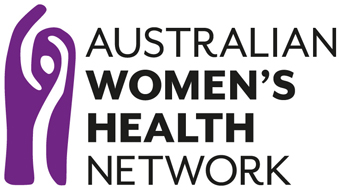The Impact on Women’s Health of Climatic and Economic Disaster
Publisher: Australian Women’s Health Network, April 2014
Status – CURRENT
The paper begins with an overview of the climatic and economic drivers of inequality,then provides evidence of ongoing injustice for women – the context within which women experience climatic and economic disaster.


Gender equality and women’s empowerment strategy
/in Government Policy, International (global) /by adminPublisher: Department of Foreign Affairs and Trade Australian Government, 2016
Status – CURRENT
This strategy applies to the work of the Department of Foreign Affairs and Trade (DFAT) and other Australian government agencies delivering Official Development Assistance (ODA). This document outlines why and how we work on gender equality and women’s empowerment in foreign policy, in economic diplomacy and aid for trade, in the aid program, and in our corporate and human resource policies.
Abortion Policies and Reproductive Health around the World
/in International (global) /by adminPublisher: United Nations Department of Economic and Social Affairs Population Division, 2014
Status – CURRENT
This report presents information on changes in legal grounds for abortion and related reproductive health policies since around the time of the 1994 International Conference on Population and Development, for 197 countries in the world, including all 193 Member States of the United Nations, 2 Observer States (the Holy See and the State of Palestine) and 2 non-member States (Cook Islands and Niue) of the United Nations. The report is based primarily on information available from the World Population Policies Database. The report also draws information from the World Population Prospects: The 2012 Revision of the United Nations Population Division and the ICPD Beyond 2014 Global Survey conducted by the United Nations Population Fund in 2012, as well as selected data from other sources.
Women, ageing and health : a framework for action
/in Policy Development Tool /by adminPublisher: World Health Organization, 2007
Status – CURRENT
The framework addresses the health status and factors that influence women’s health at midlife and older ages with a focus on gender. It provides guidance on how policy-makers, practitioners, non-government organisations and civil society can improve the health and wellbeing of ageing women by simultaneously applying both a gender and an ageing lens in their policies, programmes and practices, as well as in research.
Five-year Review of the implementation of the Beijing Declaration and Platform for Action (Beijing + 5) held in the General Assembly, 5 – 9 June 2000
/in Other /by adminPublisher: United Nations Entity for Gender Equality and the Empowerment of Women
Status – CURRENT
The aim of the Beijing Declaration is to “advance the goals of equality, development and peace for all women everywhere in the interest of all humanity”. The website includes all documents, agendas, statements and other information relevant to the 5, 10 and 15 year reviews of the Beijing Declaration and Platform for Action.
United Nations millennium goals
/in International (global) /by adminPublisher: United Nations, September 2000
Status – CURRENT
The United Nations Millennium Declaration commits world leaders to combat poverty, hunger, disease, illiteracy, environmental degradation, and discrimination against women. The MDGs, erived from this, comprise eight goals that all 191 UN Member States have agreed to achieve by the year 2015
Beijing declaration and platform for action
/in International (global) /by adminPublisher: United Nations. Fourth World Conference on Women, 1995
Status – CURRENT
The Platform for Action is an agenda for women’s empowerment. It aims at … removing all the obstacles to women’s active participation in all spheres of public and private life through a full and equalshare in economic, social, cultural and political decision-making. This means that the principle of shared power and responsibility should be established between women and men at home, in the workplace and in the wider national and international communities. Equality between women and men is a matter of human rights and a condition for social justice and is also a necessary and fundamental prerequisite for equality, development and peace. A transformed partnership based on equality between women and men is a condition for people-centred sustainable development. A sustained and long-term commitment isessential, so that women and men can work together for themselves, for their children and for society to meet the challenges of the twenty-first century.
The Convention on the Elimination of All Forms of Discrimination against Women (CEDAW)
/in International (global), Other /by adminPublisher: UN General Assembly, 1979
Status – CURRENT
The Convention provides the basis for realizing equality between women and men through ensuring women’s equal access to, and equal opportunities in, political and public life — including the right to vote and to stand for election — as well as education, health and employment. States parties agree to take all appropriate measures, including legislation and temporary special measures, so that women can enjoy all their human rights and fundamental freedoms. The Convention is the only human rights treaty which affirms the reproductive rights of women and targets culture and tradition as influential forces shaping gender roles and family relations. It affirms women’s rights to acquire, change or retain their nationality and the nationality of their children. States parties also agree to take appropriate measures against all forms of traffic in women and exploitation of women. Countries that have ratified or acceded to the Convention are legally bound to put its provisions into practice. They are also committed to submit national reports, at least every four years, on measures they have taken to comply with their treaty obligations.